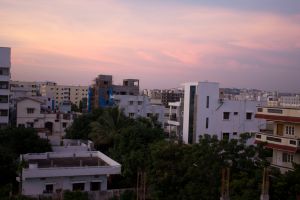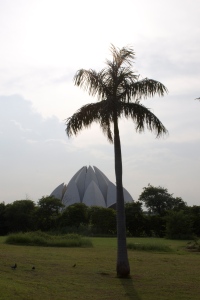“Women hold up half the sky.” — Chinese Proverb
I sat, hot and sweaty, in a large concrete room in the country of India. Across from me were 62 middle schoolers wide-eyed and smiling. Skin a golden brown and hair as dark as the night sky, but as shiny as the stars that graze it. I watched as a lanky girl in a red skirt and white polo stood up and introduced herself as the peer-elected 6th grade president of her class. She and 5 other elected middle school peers act as this community’s cornerstones of sex trafficking education.
During my International Honors Program Semester Abroad, I had the opportunity to visit a rural village in India, where this 6th grade girl lived and empowered her entire community. There, families are so impoverished, starved, and desperate they sell their daughters to sex traffickers. Gangs and thugs creep about looking for innocent and naive girls to kidnap. Girls, young and illiterate, are forced victims to the interconnected, corrupted scheme of sex trafficking. More than 2 million young girls disappear off the face of the earth each year. They are kidnapped, sold, objectified and forced into sex trafficking. Hour after hour, day after day, they are raped, beaten, scolded, dehumanized. Their bodies and minds broken by the vicious world around them.
A lot of things contribute to the vicious and hideous crime of sex trafficking across the world. Police corruption, poverty, oppression. But as someone with a passion for public health, my concentration is on the upstream solutions because a temporary Band-Aid fix is not the appropriate treatment for a gashing, oozing, bloody problem. This solution : education. When the entire community is educated, the force against sex trafficking grows. It becomes unacceptable. It emerges as the terrible monster it is. But this only begins with education. Educate your children, your daughters, the community. With education comes empowerment. Empowerment breeds success. It lifts people out of poverty, and its long term payoff is priceless.
The public health issue I feel especially passionate about is an intertwined complication of all of the above. It centers around the misconception that women only have their vaginas to offer the world. That is why millions of girls are kidnapped, sold, and trafficked for the delight of perverted, satanic people — because they believe women are just their vaginas. That is why countries like Syria, Iraq, and India encourage, promote, and sometimes put into law the covering of women’s bodies — because they believe women are first and foremost sexual beings. That is why, in the United States, women still make 70 cents to every one dollar a man makes — because a woman’s body is to be sexualized, forget the respectability and dignity of her mind. But I am here to tell you that women are the backbone of this country, of foreign countries, of this world. God help this world if women were to disappear. I have spent the last 21 years of my life being raised by a strong, single, independent mother. I have spent the last 15 years of my life being sculpted into an intelligent, courageous, and passionate woman by the American education system. And I have spent countless years, learning from, listening to, and being mentored by groundbreaking and influential women.
Gender inequality is a public health issue. It leads to oppression, poor health outcomes, and structural violence. I have seen how gender inequality leads to obstetric violence in South Africa. Young girls, often rape victims, are taunted by nurses and doctors. In worse case scenarios, episiotomies are performed without medication, consent, or explanation. Gender inequality perpetuates an unbelievably high rate of Caesarian sections, 80%, in Brazil when the World Health Organization suggests a 10% rate. Gender inequality is why female infanticide still occurs in India, despite laws deeming sex selected abortions illegal. Gender inequality is why 23% of the world’s females are illiterate compared to only 13% of the world’s males.
The solution to this ominous and fatal public health priority is a complicated assemblage of various social factors, determinants of health, institutions, and autonomy. But it starts with education.
For example, an essential part of India’s healthcare system are the Accredited Social Health Activists (ASHAs). Each ASHA is a woman and contributes greatly to a healthier, happier population. After basic health education training, she becomes the neighborhood health educator. An ASHA holds after school programs to teach neighborhood children the importance of education and healthy habits. She visits homes to distribute iodine tablets so the household has clean drinking water. She educates families about the importance of a balanced diet on a tight budget. She walks pregnant women to the hospital. Holds their hand while they give birth and, after, provides unconditional support for the infant and new mother. These examples only scrape the tip of the iceberg in regards to her health reform in the community. For her hard work, she is paid modestly so she is able to support a family of her own. Now, many Indian women are using their education to positively contribute to the nation’s health, economy, and safety.
Gender inequality is why I was abandoned by my birth parents in China. But because of education (and other extraneous factors) I am who I am today — someone who will shake the world, who will make a difference. Education breeds empowered, smart, opinionated, and strong women. Women that come together as one unstoppable and uncompromising force. Thank you International Honors Program and the University of Richmond for granting me the opportunity to study around the world, as an empowered, intelligent, confident woman.
Featured are some of my favorite pictures from the semester:

India was filled with beautiful stands of colorful trinkets. It was hard not to stop and browse for some souvenirs

We made a quick stop to Jaipur where we visited the Pink City.

I have never seen a more beautiful coast than the South African coast. It might have also helped that I was hundreds of feet in the air hanging from a parachute.

A better view of the coast line where you can see the infamous Lion’s Head mountain on the left and the start of the 7 Apostles mountains on the right.

Causally jumping from rock to rock as I climb Lion’s Head.

Our rural stay in Zweletemba, a formally blacks only township, was a life-changing experience. To be able to live with a woman, an activist, a hero who truly changed the world for the better was surreal. If you see me around campus, ask me about Zweletemba. I love talking about it!

The city of São Paulo was filled with beautiful street art like the one pictured above.

We took a weekend trip to Rio de Janeiro and saw the World Wonder Christ the Redeemer Statue.

I am beyond blessed to have experienced this life changing abroad semester. Thank you to everyone who supported me along the way.



 Posted by Brooke
Posted by Brooke 

































